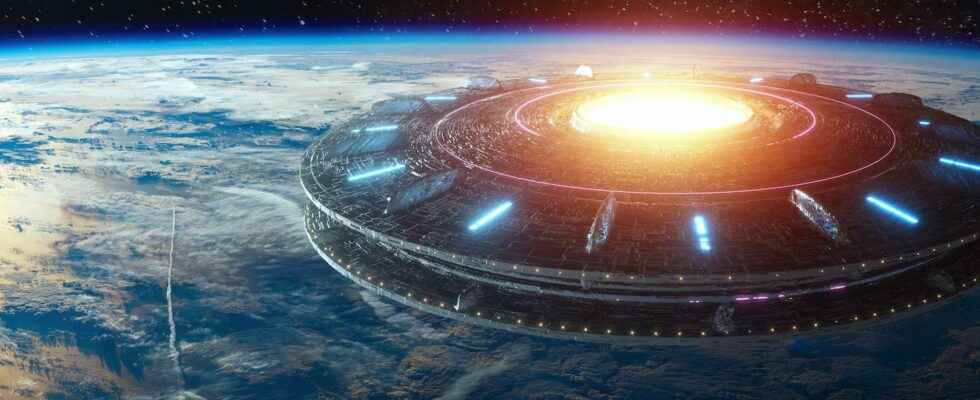Founder of Seti projects — Search for Extra-Terrestrial Intelligence –, Frank Drake created in 1961 what is called thedrake equation : it makes it possible to quantify the potential number of intelligent civilizations other than ours in the galaxy. Since then, many programs have been launched, in search of electromagnetic signals long-range that would come from such a civilization.
Since then, with the advent of exploration technologies and analysis, the researchers went in search of biosignatures on exoplanets: traces of methane, water, molecules organic… Many could be the traces left by an extraterrestrial life form. But a team of American researchers handed over thedrake equation in question in a study published in the journal Astrophysical Journal Lettersor rather it proposes updates: to make two equations rather than one. “If we think about technosignatures more broadly and don’t just focus on communication, we can write a pair of Drake-like equations for biosignatures and technosignatures”write the researchers.
Where life stops, technology can continue
From the general equation, they thus obtain two separate and almost independent evaluations, which make it possible to distinguish N(organic) and N(tech). In particular N(bio) depends on “the fraction of planets that develop biospheres important of the type that give rise to remotely detectable biosignatures” and of “the average length of time the biosphere remains detectable”details the study, and N(tech) depends on “number of planets with detectable technosignatures”of “the fraction of planets with life with detectable technosignatures of all kinds” and of “the length of time these technosignatures remain detectable”.
Even more, researchers lament the fact that extraterrestrial technologies are restricted to a subset of extraterrestrial civilizations : a detectable technology would necessarily be associated with a living world, therefore with a pre-existing biosignature. They underline the fact that, ultimately, technology can be evaluated independently of biology. Especially because “Technology can long survive the biology that created it”but also because “once created, the technology could self-replicate and spread”explain the researchers.
Despite the Fermi Paradox, technology signatures are still possible
Thus, according to them, a created technology can then spread to other worlds without a biosphere, and even more so, to interstellar space! By spaceships, but not only. Any technology designed to signal its presence to other worlds or to explore them should be detectable. They also suggest the possibility of uninhabitable worlds on which an alien civilization would have implanted a number of technologies, “whether for industry, energy production or even the treatment of wastecreating entire “technospheres” spatially independent of the biosphere that spawned them”.
They make, by this supposition, a link with the fermi paradox. He predicts that an extraterrestrial civilization that has developed technology capable of galaxy travel even at a tiny fraction of the speed of light, should have already come to visit us. Indeed, the Milky Wayat the height of its 10 billion years, could shelter such a large number of habitable worlds that the probability that in one of them a civilization has developed sufficiently is very high.
Humanity is detectable throughout the entire Solar System
They take the example of humanity: in our case, N(bio) = 1 because the only biosignatures can be found on Earth. But N(tech) = 4, because probes and rovers were sent to Jupiter, Venus and March! As for the other factors such as Lb and Lyou, which represent the lifetime of a civilization or the technologies it has created, are also debatable. Because our only reference, whether it is in the estimation of Lb or in the evaluation of technologies and their manufacturing time, is in fact… ourselves! It is then impossible to fix these two parameters.
Finally, the biosignatures are much less detectable than technosignatures. The researchers argue that even for the star closest to us, Alpha Centauri, we wouldn’t be able to detect life there if it were there. They thus conclude, after a long discussion, by the fact that “technosignatures could be more abundant, more durable, more detectable and less ambiguous than biosignatures”.
Support an editorial team committed to popularizing science on Patreon!
Our mission ? Return the knowledge accessible to everyone.
We produce our own articles, investigations and reports every day, all on a human scale. Support us in this approach and this ambition.
Subscribe to Futura on Patreon!
Two subscription plans are offered to you with the following advantages:
- ” Futura ad-free »: get guaranteed ad-free access to the entire site for €3.29/month (+VAT).
- ” I participate in the life of Futura »: in addition to access without advertising, take part in the life of our independent media (votes, new content, surveys, etc.) for €6.29/month (+VAT).
Interested in what you just read?
